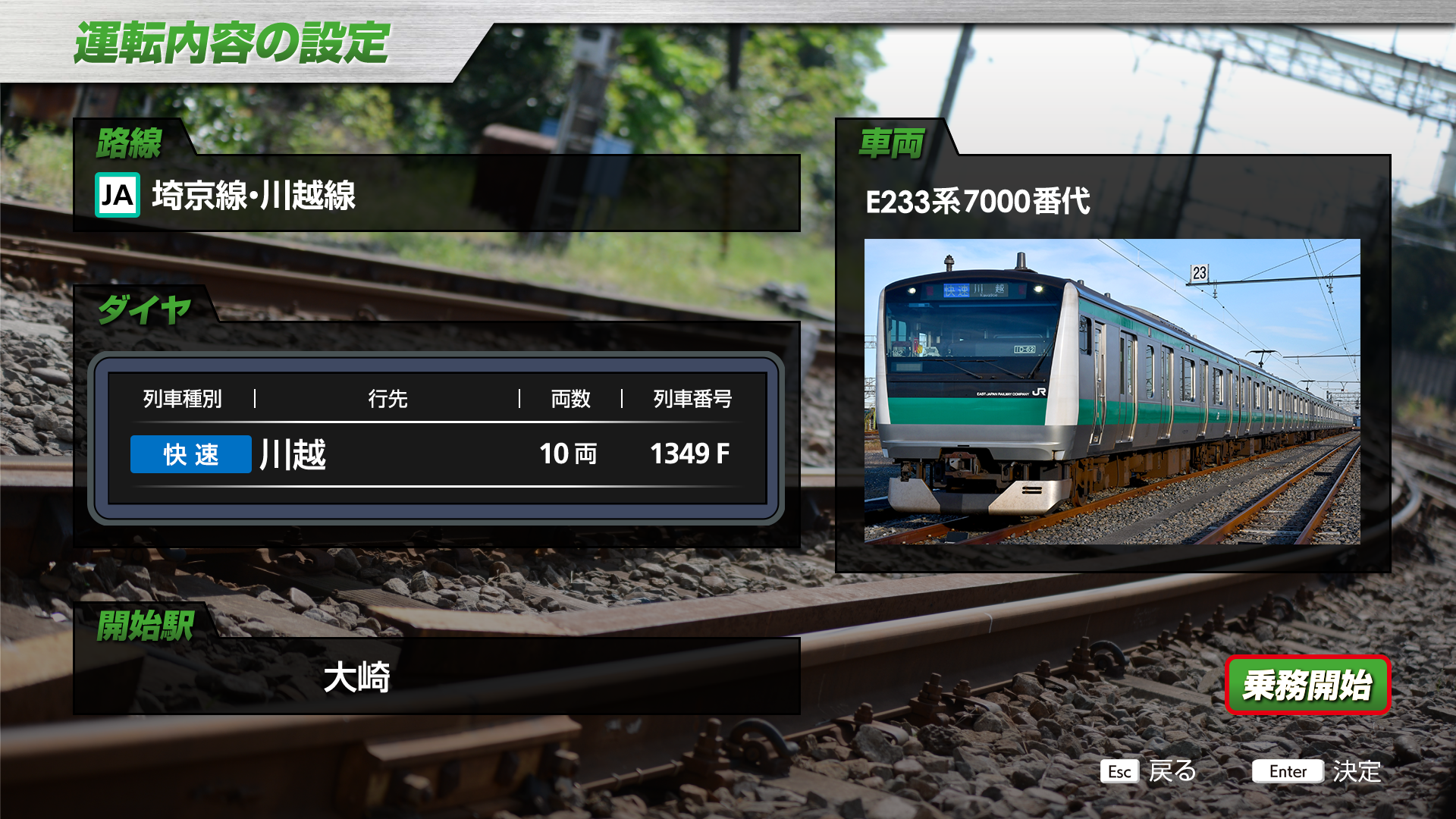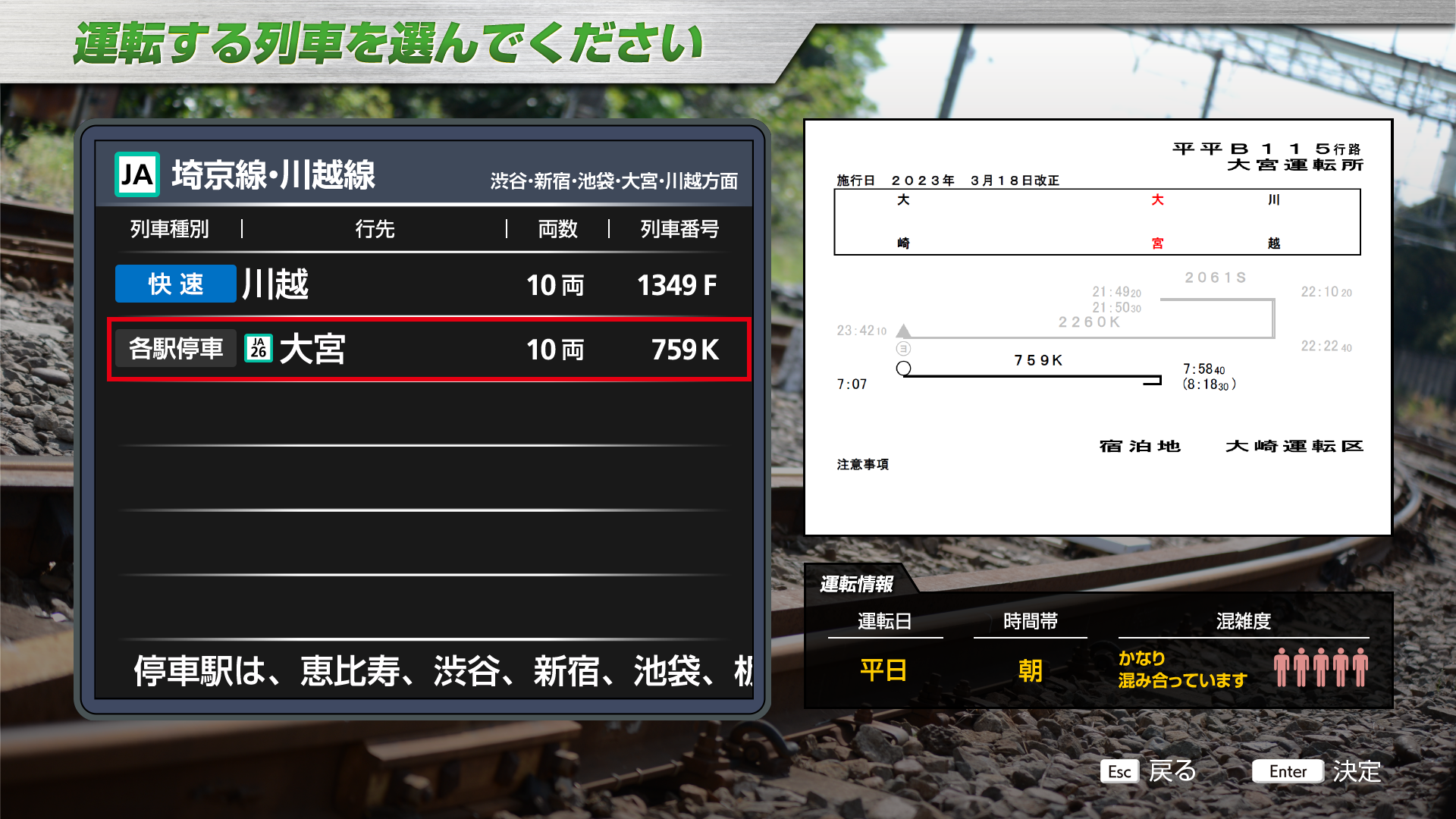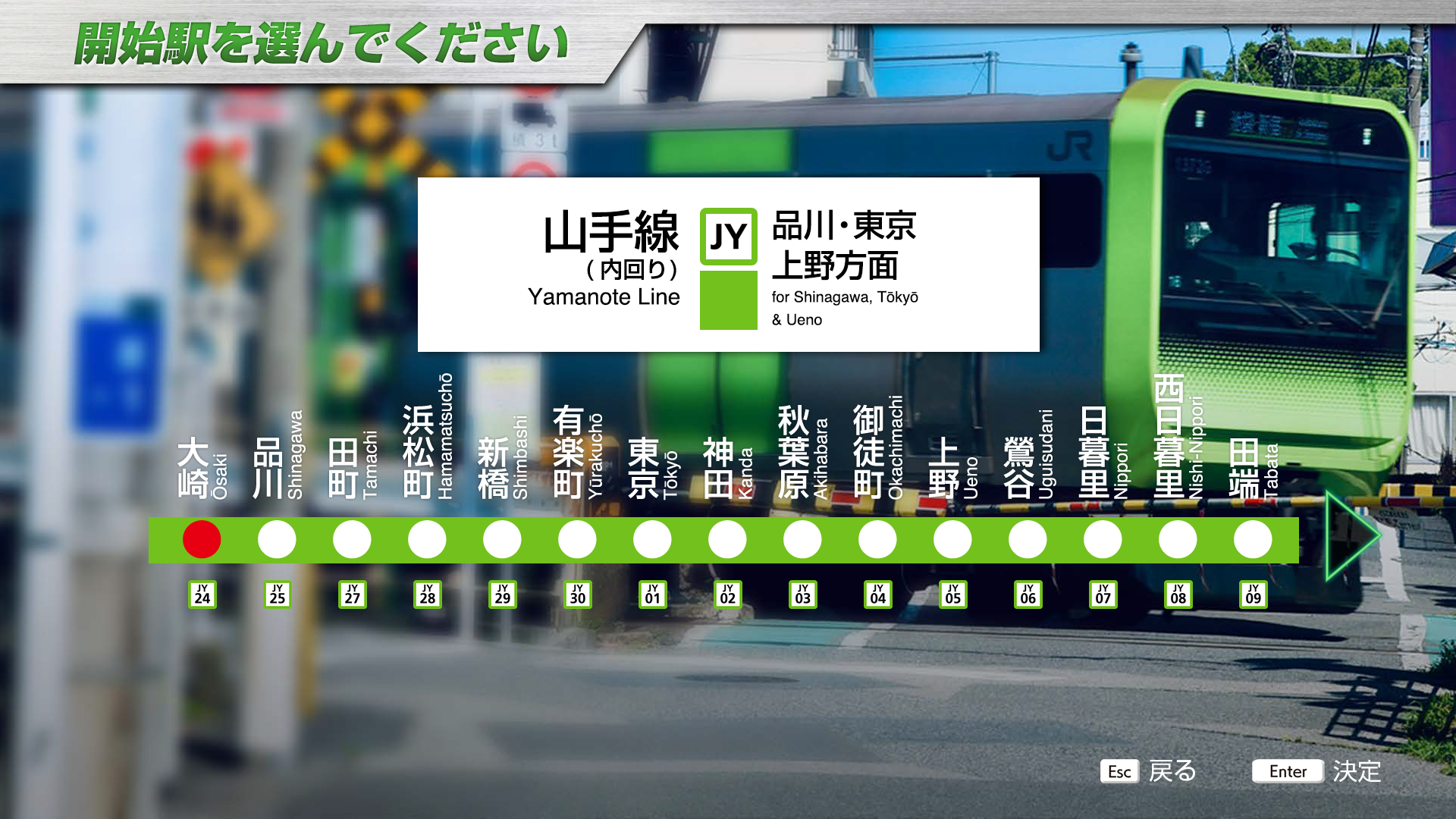Thank you for your patience, we have started to distribute the 8th DLC "Joban Line" today, August 29 (Tue.)!
About the Route
The Joban Line runs from Ueno Station in Taito-ku, Tokyo, to Sendai Station in Sendai City, Miyagi Prefecture, via Chiba, Ibaraki, and Fukushima prefectures, and is the longest line among JR lines not named "Main Line.Until now, the Joban Line has operated to and from Ueno Station, but on March 14, 2015, the Ueno Tokyo Line began service, with some trains now running between Shinagawa and Ueno.
This DLC includes the Ueno Tokyo Line between Shinagawa Station and Ueno Station and the Joban Line between Ueno Station and Katsuta Station.
The line is characterized by the change of electrification system along the way, and there is a DC/AC switchover (dead section) between Toride and Fujishiro stations.
(Shinagawa Station to Toride Station: 1500V DC, Fujishiro Station to Sendai Station: 20,000V AC)
Another major feature of this line is that it can operate at 130 km/h, the highest speed on a conventional JR line.
The first half of the line shows a significant change in scenery along the line from an office area in central Tokyo to a bed town. The second half of the line features the peaceful green landscape of Ibaraki Prefecture.
The long-distance route, which takes about two hours, allows passengers to enjoy driving while viewing the changing scenery along the route.
Points of Appeal
- Capable of operating at 130 km/h, the highest speed on JR conventional lines!
- Capable of long-distance operation with a total length of 133.7 km!
- Possible to experience automatic DC/AC switching (dead section) between Toride and Fujishiro stations!
- The section of the Ueno Tokyo Line that opened in March 2015 can also be operated!
- Actual voice broadcasts by the current train conductor are implemented! (Broadcasting is handled by the Katsuta Transportation District.)
Route Information
- Section: Joban Line Shinagawa→Katsuta outbound
- Total length: 133.7 km
- Number of Stations: 29 *Includes a section of the Ueno Tokyo Line.
- Security equipment: ATS-P
Train schedules that can be operated
- Train Number: 1177M
- Type/Destination: Local train bound for Katsuta
- Type of train: Series E531-0 10 cars
- In charge of meat voice in-train broadcasting: Katsuta Transportation District
- Train Number: 1157M
- Type/Destination: Local train bound for Tsuchiura
- Type of train: Series E531-0 10 cars
- In charge of meat voice in-train broadcasting: Katsuta Transportation District
International sales price: US$39.99
The following major updates and fixes have been made to coincide with the DLC release.
- Implementation of multiple train schedules (for all routes) (Target: All routes)
<Train schedules added this time>
Keihin-Tohoku and Negishi Lines: 727B Local Train bound for Isogo
Tokaido Line: 1525E Local Train bound for Odawara
Chuo Line Rapid Service: 916H Chuo Special Rapid Service bound for Tokyo
Oito Line: 3113M Local Train bound for Hotaka, 3241M Local Train bound for Shinano-Omachi
Saikyo Line/Kawagoe Line: 759K Local Train bound for Omiya
Senseki Line: 763S Local Train bound for Tagajo,781S Local Train bound for Matsushimakaigan
Keiyo Line: 780Y Local Train bound for Tokyo
Yamanote Line: 876G Local Train bound for Osaki
- Implemented changes in signal indications by simulating preceding trains in the morning commuting timetable.
(Subject: Keihin-Tohoku Line and Negishi Line 727B, Tokaido Line 1525E, Chuo Line Rapid Service 916H, Saikyo Line 759K, Keiyo Line 780Y, Yamanote Line 876G)
*Because different operating speeds are set for daytime and morning congestion periods, there are also differences in the travel times set between stations.
*Due to program modifications to reproduce the preceding train, the speed reflection of signal indications on the HUD has been temporarily withdrawn.
- Renewal of some UI to implement multiple train schedules

▲After selecting a route, you will be redirected to a screen where you can select the train schedule and the starting station.

▲The train schedule selection screen is designed in the motif of LCD departure markers at stations, and the timetable used by drivers is displayed on the right side of the screen. The operation information allows you to check the date and time of operation and the level of congestion.
*The train schedule used by the driver is newly created for the simulator and differs from the one actually used.

▲The start station selection screen now reflects station numbering. (For some lines).
- Chuo Line rapid Service - TIMS train type setting function (automatic selection)
In the Chuo Special Rapid Service train schedule, a function to automatically set the TIMS train type selection at Tachikawa and Nakano stations has been implemented.
- Oito Line - implementation of conductor voice broadcasts on additional timetables
With the cooperation of the Matsumoto Transportation District, we implemented a conductor's broadcast using his own voice.(3113M Local Train bound for Hotaka, 3241M Local Train bound for Shinano-Omachi)
- Senseki Line - implementation of conductor voice broadcasts on additional timetables
With the cooperation of the Miyagino Transportation District, we implemented a conductor's broadcast using his own voice.(763S Local Train bound for Tagajo,781S Local Train bound for Matsushimakaigan)
- Keiyo Line - implementation of conductor voice broadcasts on additional timetables
With the cooperation of the Soga Transportation District, we implemented a conductor's broadcast using his own voice.(780Y Local Train bound for Tokyo)
- Yamanote Line - implementation of conductor voice broadcasts on additional timetables
With the cooperation of the Ikebukuro Transportation District, we implemented a conductor's broadcast using his own voice.(876G Local Train bound for Osaki)
- Yamanote and Keiyo Lines - The timing of conductor announcements has been corrected.
Timing has been changed to take into account a series of basic actions (backward check).
- The display range of the stop position mark has been corrected.
Changed the moving scale of the stop position display and stop position mark ♦. (5m forward/backward → 3m forward/backward)
- The effective range of regenerative braking for Senseki Line Series 205 and Oito Line Series 211 has been corrected.
The unit indicator light turns off at about 25 km/h as the effective range of the regenerative brake is modified.
If you like this major update and the Joban Line DLC, we would appreciate your review ratings.
Your reviews are the driving force behind our work.
We will continue to update the site based on your reviews and comments.

Changed files in this update